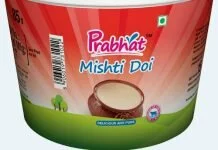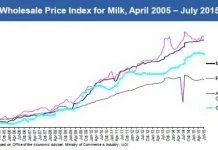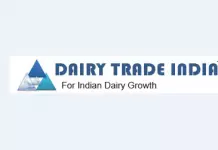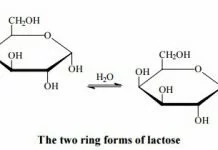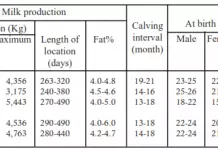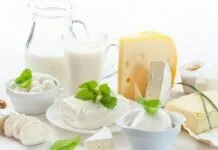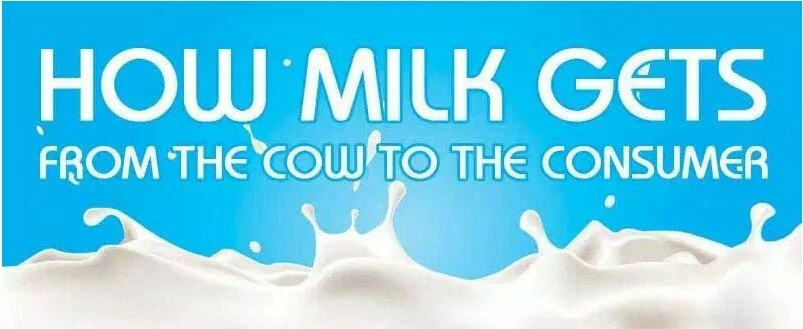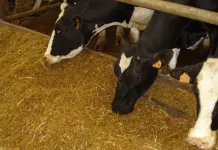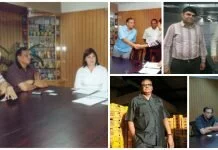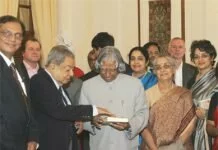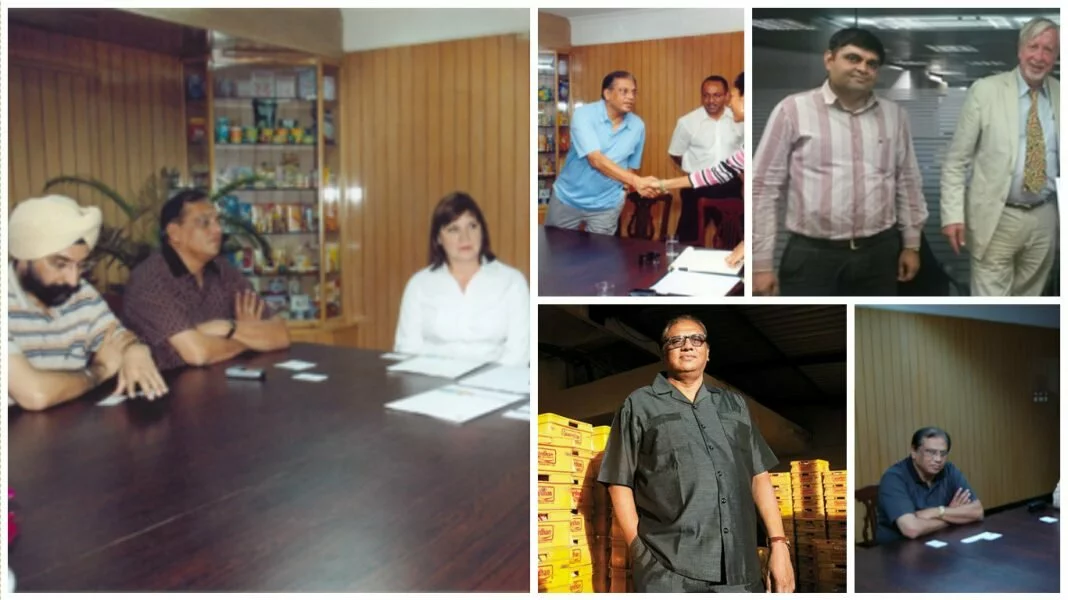A Sweetened Condensed Payback
Every mother longs to see her children drink lots of milk and grow up to be strong. Mothers and grand parents do everything possible to make their kids drink a glass or two of milk, even if they have to spend hours running after the child to finish that one glass. Why do they do so? Is this the phenomenon seen all over world?
Every Indian mother knows that milk has nutrition unparalleled to any other food. If there is one food that is complete, it is milk. For a largely vegetarian population, milk is an essential and vital source of protein.
Our civilization, which is over 5000 year old, is founded on agriculture with animal husbandry as an integral part of it. Our cattle feed on agriculture residue and convert this non-edible residue into the most valuable food called Milk, thereby making our agriculture more sustainable and cost-effective.
In 1992 we at Amul, conducted market research to understand which products were the consumers after. Not surprisingly nearly 35% of Indian consumers were expecting Amul to launch flavored milk and other similar beverages. In fact, in the mid-eighties, we did attempt to launch flavored milk in chocolate and elaichi flavored 200ml tetra packs. It was launched pan-India with excellent advertising and using the momentum, we subsequently also launched Lassi in tetra pack. Although the initial response was good, we could not sustain sales with products like Frootie and Coca-cola in competition. Ultimately we decided to withdraw these products.
I still thought it was a good product offering and the results of the consumer study in 1992 pointed to a persistent gap in the market. My logic of addressing this gap with chocolate flavored milk was that when the consumer buys malted milk food like Nutramul or Bournvita he ends up spending more than 60% on taxes and trade margins. It meant that the customer is deprived of the true value of the product. I reasoned therefore that if we launch malted milk, we could give the consumer almost twice the quantity at a much lower cost by adding milk to the end product. We therefore tried to re-launch flavored milk in pouches, first in Ahmedabad, under the brand Nutramul. This time around, we had done consumer research and the feedback was promising. However, to our shock, when we launched 500ml take home packs and subsequently 200ml packs, neither could be sold! The product response in major city of Ahmedabad was not too good.
Of course the consumers cannot be blamed for the product failure, for I believe that something missing in the marketing mix.
In view of other pressing demands, we did not pursue a product renewal strategy and rather thought about other ideas like introducing sterilized milk in a glass bottle. You see the problem with Glass bottles is that it requires a strond a distribution chain based on recycling of glass bottles like the soft drink marketers such as Coke and Pepsi. A very costly proposition and highly risky for a product which had already failed twice in the market!
As you would all know, Amul is a co-operative with 18 such dairies forming the board of the marketing company called Gujarat Co-operative Milk Marketing Federation i.e. GCMMF. I still wanted all the member dairy cooperatives of GCMMF to market milk beverages in ready-to-drink packs for on-the-go consumption in their local areas. This was our attempt at continuing with the product while fine-tuning it. These dairy members began marketing their local brands, and my strategy was to deploy the brand Amul, for higher segments in synergy with products like ice cream.
Sometime in year 2000, I had a fortunate meeting with an Larsen & Toubro executive who informed me that L&T had put a huge bottle manufacturing plant to make thin-wall low-weight non-returnable glass bottles. This was like music to my ears, for this was the moment we were waiting for since 15 years. We immediately got samples and got cost estimates done ending with a test marketing run with three flavors in the city of Baroda. This city was a good choice because back then, most bottled milk was consumed on Railway stations in India and Baroda was a major railway junction. Usually customers would get down from the train looking for milk, buy flavored milk from a shop or vendor and drink it in a hurry before the train left because they had to return the bottles. After our launch in Baroda, I personally spent a few hours at the railway station to see how the customers reacted. When they finished in a hurry and returned the bottle, only to be told that Amul bottles were non-returnable, I saw a few buy half a dozen bottles at a time and happily run to their coach to sit and enjoy their drink leisurely! This was the aha moment we waited for and we were sure the product would succeed this time around.
I decided to launch Amul flavored milk in non-returnable glass bottles on a full scale and then extent the portfolio further.
Consumers were readily accepting the flavored milk in glass bottles as the content was visible from the pack and the sealed glass bottles were also more hygienic. We decided to begin with glass bottles and then later on introduced UHT treated milk beverages in tetra packs. We hoped that the consumers would accept these once they became familiar with them. UHT lines are more capital intensive and complex and we assumed that would help us in long term to keep the competition at bay. Also the weight of tetra packs is much less compared to glass leading to lower transportation costs.
With all this in mind, we first launched flavored milk in basic flavors in glass bottle under brand ‘Amul Shakti’. The price was set at Rs. 8 in Gujarat and at Rs. 10 in Maharashtra. As the sales volume went up, we enrolled more dairies to produce flavored milk using their existing spare capacity with minimal capital investment. When the sales volume crossed about 50,000 bottles a day, we decided to change the brand to a mainstream single brand called ‘Amul KOOL’.
We wanted to give a fun image to ‘Amul KOOL’ and accordingly discussed or marketing plans with the advertising agency in detail. We also discussed our plans with Tetra pack manufacturers and launched KOOL in tetra packs along with glass bottles. The film was shot in a foreign location similar to some of the soft drink advertisement in that era – to create an aura of excitement around the brand. It was targeted towards the youth market as the trend clearly showed that people were moving towards healthier natural drinks and going away from artificial soft drinks.
I had read an article, which showed how cola consumption had increased in the last 100 years, and simultaneously fluid milk consumption had decreased, in inverse proportion. I reasoned that this statistic was a result of the vigorous marketing by cola companies and while the milk brands lost share of the drinks market. In fact it was more of a failure for the dairy industry as they had failed to market a superior product than cola, which they probably thought of as a minor competitor. At Amul, we wanted was to promote milk beverages aggressively especially when the customer was becoming more health conscious and easier to reach through newer and faster mediums like the Internet.
I would like to recall one incident in particular. Shri Peter Mukherjea, who was then the CEO of Star network, happened to visit Anand for a meeting. We had been buyers of Star TV air-time from day one and were the first to sponsor one of their major blockbuster TV series ‘Chandrakanta’. Amul enjoyed a very warm relationship with Star network. On our plans to launch Amul Kool, Peter gave us an extra-ordinary rate especially for the new product Kool and enabled us to get more mileage out of a relatively small advertising budget. It was a very kind gesture and helped the brand greatly at that crucial stage.
Having launched flavored milk in glass bottles and tetra packs nationwide, our sales volume had multiplied and the team was working hard to beef up our distribution, particularly on railways, bus stations and college canteens. This, combined with our other parallel initiatives to create a captive retail distribution network of Amul Parlors, gave this product a shot in the arm.
Bouyed by the success we decided to extend this line-up and launch a beverage which was all natural, low in calories, low fat, free from any stabilizers or artificial colors, and genuinely Indian; yet futuristic in nature. This beverage was an all time Indian favorite – spiced buttermilk. This was launched first in 200ml tetra pack and then 1-liter brick pack for home consumption. When the product was ready we got it concept tested in Mumbai and also measured its demand elasticity. Based on this we decided to price it at Rs 5 per pack. Like we had done earlier for ice-cream cone, we would make all channel members sacrifice their margins to build future business to benefit everyone. I hence requested Tetrapak to give special price for a year, reduced retail & distribution margin and used the time to build the volume.
The product became an instant hit almost automatically. Sales grew at a frantic pace, so much in fact that we ran short of capacity for about three seasons, despite putting in capacity extensions. With this success, our confidence increased multifold. We had faced failures in the 80s and the 90s, but finally we were succeeding in creating a portfolio of beverages that the Indian youth accepted wholeheartedly.
We were offering the Indian consumer what they wanted and were protecting our ‘milk territory’ vs. colas!
But all this success did not mean we did not have competition. We did and to stay ahead of this competition we launched coffee under the brand ‘KOOLKAFE’ and real fruit-based milk shakes under the brand ‘KOOLSHAKE’ in flavors like mango, chocolate and strawberry. We used upmarket three-piece tin cans like they used for fruit juice and cola drinks to reduce the acceptance barrier.
They were slightly different in size and style so as to differentiate them from the cola cans but were upmarket and priced a little higher. Also the pack size was a little bigger as it was a sort of indulgence. These were targeted for college going youth and these products were very well received. In fact in about five years we had built a network of ten plants to manufacture the largest range of natural milk-based drinks, ideal for the youth of this country.
Here, I must add that this was a small but very strategic beginning. The Dairy industry of India must work hard and help raise the market share of milk-based beverages. It’s a constant battle but the dairies are winning.
At this stage I must tell you about a story I heard from Dr. Kurien, which was my source of inspiration throughout this flavored milk battle.
I think it was the sixties, when Dr. Kurien was leading a delegation of the Government of India, and was visiting Nestlé’s headquarters, to seek their assistance in manufacture of sweetened condensed milk sometime. As the meeting was underway someone from other side used the word ‘natives’ which hurt the pride of Dr. Kurien. He considered this as an insult of a free nation and told the gentleman point blank that India had been a free and sovereign nation since 1947! He walked out of the meeting and then immediately requested Government of India support to develop the technology for sweetened condensed milk locally.
Some time in the early nineties, I learned that an old unused sweetened condensed milk plant was available on sale. Mr. J. J. Baxi, who was my predecessor, wanted the plant shifted to Mehsana dairy in Gujarat and make sweetened condensed milk. The Indian Army purchased all their milk and milk products requirements from Dairy co-operatives except sweetened condensed milk for which Nestle was the sole supplier.
With the active help of NDDB and concurrence of Mehsana dairy the plant was purchased and commissioned at Mehsana dairy. But soon thereafter Mr J. J. Baxi retired and onus of marketing their sweetened condensed milk obviously came on me.
I was aware that one needs considerable expertise and experience to make sweetened condensed milk as it is a very sensitive & technical product. Any lapse and it could result into product failures, black spots or even button like formations in product. After thinking carefully, I derived two conclusions – one, that we will not launch consumer pack or approach the defense, till we have perfected the product and have sufficient experience. And second, that we will instead pack the product in 200kg drum packs and sell as ingredient to food processing plants who need it.
I deployed a technical person to market it since this was a complicated product – right from manufacturing it to distributing and marketing it. It was a slow and arduous journey to lift the volumes. Our style of marketing was unique too – social connections and acquaintances to identify opportunities! Since Nestle were the single source of condensed milk, most customers welcomed second supplier and in the process he landed with one or two big customer. As we got some more experience and volume increased, we decided time was right to launch the consumer pack. We had observed that the competition by virtue of near monopoly had increased prices and taken to a level of nearly Rs. 56 for a 400g tin!
We decided to price it at the lowest possible and started with a rock bottom of Rs 25 for a 400g tin to send shivers through the spine of competition even before we sold our first pack. Our message to Nestle was clear – we are here and here to stay, this is our market and we understood it better than their bosses sitting on plush leather chairs on the other side of the world.
More importantly, we were differentiating the product. Years of no competition meant hoarded of overlooked consumer complaints, like opening a can of condensed milk can was a big problem for consumers as one had to cut the can using sharp knife and a hammer. Tin cutters were a rarity in India.
We found a supplier who offered us a three piece Can – with easy opening pull-tag lid, like the ones in the coca-cola tins. A little more expensive but very useful. We knew that the competition had their own outdated tin-manufacturing plant, which they could neither upgrade by investing nor divest quickly and use an eternal supplier. This significantly reduced their competing power and our sales multiplied. The time was right and we approached Indian Defense.
In life you face situations that make you laugh sadly. The purchase office at Defense rejected our Condensed Milk in easy opening cans because they were not as per specs i.e. without the easy opening lid! We argued against it to say that the specification was outdated and that it is easier to use a pull-out lid. The argument was then whole heatedly accepted and our rates were winning the deal since we didn’t have to pay royalty to foreign principal for the brand and its outdated technology!
By the year 2000 we had captured major market share and expanded our factories three-fold!
We had taken on the MNC and won hands down. This was the same company that insulted Dr. Kurien in 1956 and after five decades, we had taken a sweetened revenge to say the least.
Hope you all have a great day and that you find inspiration in every day life.
– B M Vyas
Mr. BM Vyas took-over as Managing Director of AMUL Co-Op. during expansion and opening up of the Indian economy & globalization in the 90s. In order to take on the competition, he championed Total Quality Management across the dairy value chain in Gujarat. Within a span of 16 years at helm of AMUL, he increased sales of AMUL to eight-folds (from Rs. 9.8 billion to Rs. 80 billion). He steered AMUL to be Asia’s largest fresh Milk processor or No. 1 Dairy Brand in India as well as in Asia Pacific, as per Media Magazine Survey, 2009. Under his leadership; AMUL launched innovative and special Dietary products like Probiotic & Sugar Free Ice Cream, Probiotic buttermilk for the first time in India.

Comments
comments











